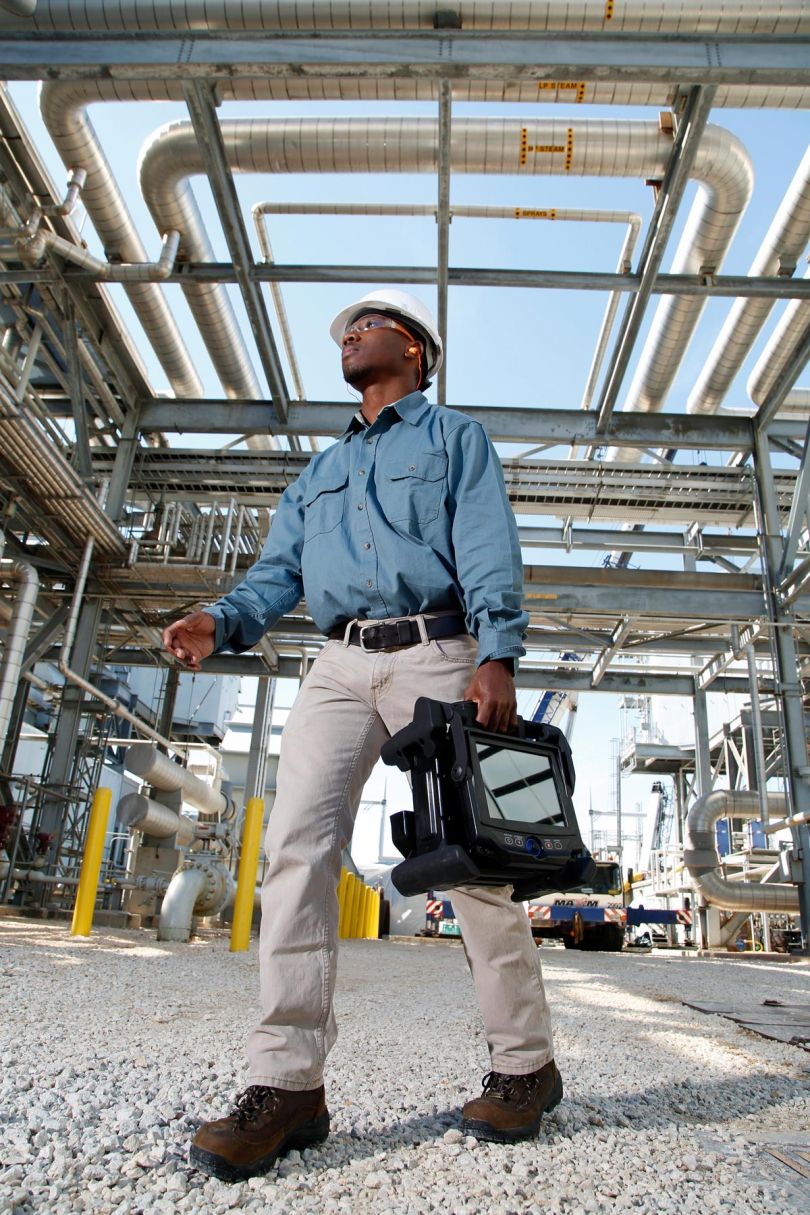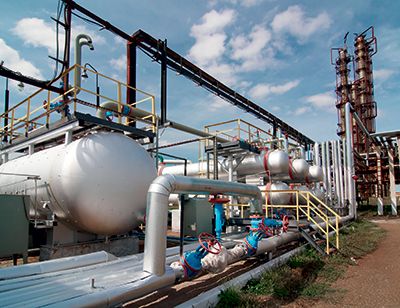Inspecting inside large storage tanks of non-explosive liquid is important to find defects like corrosion, erosion, and deteriorated welded areas that can compromise their structural integrity. While inspectors rely on flexible videoscopes to enter the tank and check for these issues, these instruments sometimes lack enough illumination to do the job.
Fortunately, inspectors don’t need to stay in the dark any longer.
This blog post will shine light on the importance of using a videoscope with bright illumination to inspect large storage tanks. Read on to learn about a leading-edge videoscope illumination technology up to the task.
Inspecting Large Storage Tanks for Defects: The Typical Workflow
First, let’s review the typical workflow for inspecting large storage tanks.
In general, inspectors access the inside of a tank through the connected pipe or tube using a videoscope. After reaching inside the tank, the inspector operates the scope to crawl down to the bottom of the tank, where defects are typically located, and look for flaws. When the inspector finds a defect, they move the scope closer to it and carefully check its condition.
This is where the importance of illumination comes in.
The Importance of Looking Inside Large Storage Tanks with Bright Illumination
Since the space inside the tank is large (most have an outer diameter of 4 m, or 13 ft), some videoscopes lack enough illumination to clearly show the condition of the tank inner wall at a glance.
Due to the poor illumination, the inspector must reach closer to the wall, scan a certain part of the area, and repeat this operation to find the defect. Not only is this time-consuming, inspectors can have trouble detecting defects in the dark and end up overlooking them.
So, how can inspectors get adequate illumination for this task? Enter, laser diode illumination.
What Is Laser Diode Illumination?
Laser diode illumination uses laser technology to provide a bright, focused light. We built laser diode illumination into our IPLEX™ NX videoscope so you can benefit from light that’s 4x brighter compared to conventional videoscopes.

An operator carrying an IPLEX NX videoscope at a plant.
The Benefits of Laser Diode Illumination for Inspecting Large Storage Tanks
For this application, the laser diode illumination is powerful enough to see inside a large tank with a 4 m (13 ft) outer diameter, making it easier for your to quickly see the location of the defect. The long exposure function of our IPLEX NX videoscope also helps to illuminate inside a large tank with enough brightness. As a result, you can find potential defects more efficiently.
To learn more about the benefits of using laser diode brightness to inspect large cavities, watch the video below:
Reducing the Inspection Time with Bright, High-Quality Images
Laser diode illumination is just one component that helps you see storage tank defects in the best image quality. Here are some unique features on the IPLEX NX videoscope that can help you identify and get a clearer look at flaws:
- Automatic exposure adjustment: automation eliminates the need to frequently adjust the brightness setting depending on the condition of the inspection area.
- An efficient sharpness setting: with improved sharpness, you can clearly identify the shape and length of cracks and other defects (important for measuring the size of a defect).
- Excellent color saturation: operators use color to judge if the corrosion and erosion is acceptable, so the correct color reproduction on the screen is critical for checking the condition of defects.
With exceptional brightness and image quality in large, wide spaces, you can perform fast, accurate inspections to maintain safe tank storage and prevent costly plant shutdowns.
Related Content
Save Time on Plant Maintenance Inspections Using Videoscopes
Video: IPLEX NX Videoscope Image Quality
Brochure: IPLEX NX Industrial Videoscopes
Get In Touch

